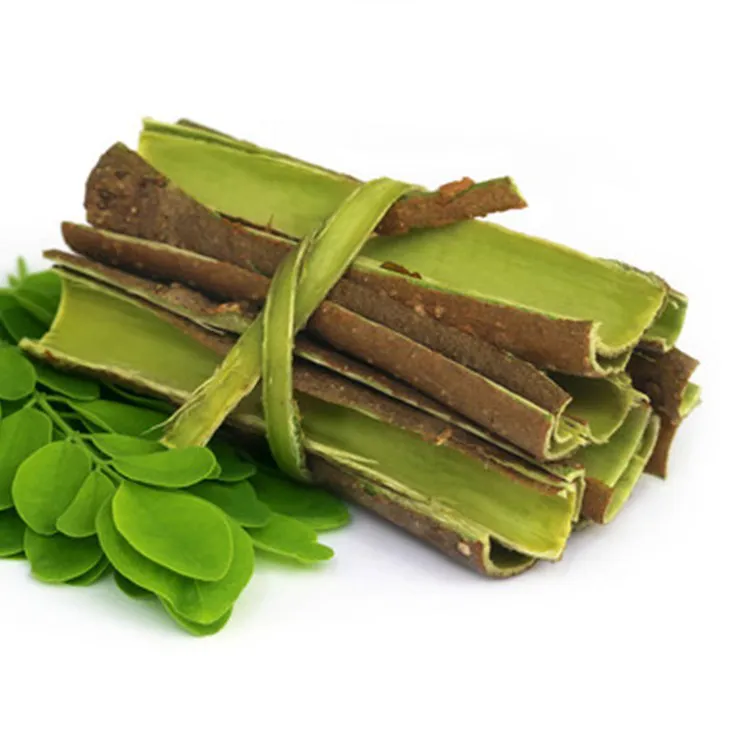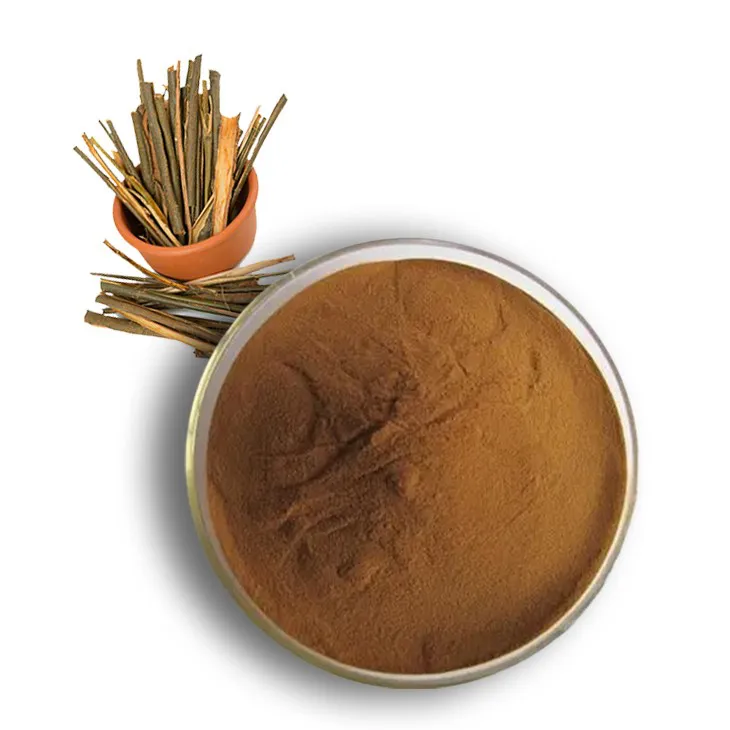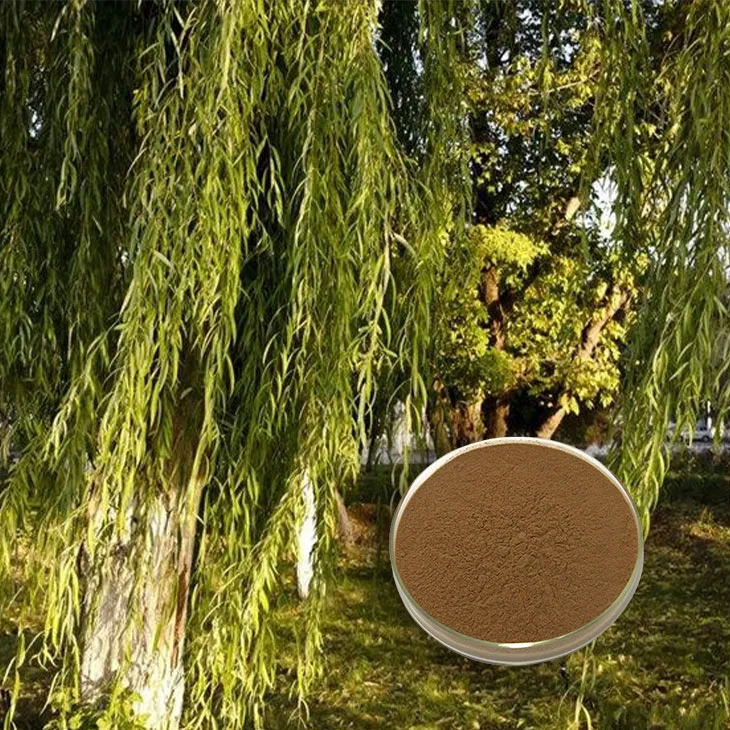- 0086-571-85302990
- sales@greenskybio.com
Harnessing the Bark's Power: Guidelines for Preparing and Dosage of White Willow Bark Extract Powder
2024-08-01

1. Introduction
White willow bark has been used for centuries in traditional medicine due to its potential health benefits. The extract powder derived from white willow bark contains salicin, which is closely related to aspirin. In this article, we will explore the proper ways to prepare White Willow Bark Extract powder and understand the appropriate dosage for different situations.

2. Preparation of White Willow Bark Extract Powder
2.1 Harvesting the Bark
Caution: Harvesting white willow bark should be done in a sustainable and legal manner. Only collect bark from trees in areas where it is permitted. When harvesting, choose mature white willow trees. Use a sharp knife or pruning shears to carefully remove small sections of the bark. Avoid taking too much bark from a single tree to prevent harm to the tree.
2.2 Drying the Bark
After harvesting, the bark needs to be dried properly. Lay the bark pieces out in a single layer on a clean, dry surface. This can be a drying rack or a clean piece of cloth in a well - ventilated area. The drying process may take several days to a week or more, depending on the environmental conditions. The bark should be dried until it is brittle.
2.3 Grinding the Dried Bark
Once the bark is completely dried, it can be ground into a powder. Use a coffee grinder or a mortar and pestle for this purpose. If using a coffee grinder, make sure it is clean and dry before use. Grind the bark in small batches to ensure a fine and consistent powder. The resulting powder is the White Willow Bark Extract powder.

3. Quality Control of the Extract Powder
3.1 Purity
To ensure the purity of the white willow bark extract powder, it is important to start with clean and uncontaminated bark. During the drying and grinding processes, avoid any contact with substances that could contaminate the powder. Check the powder for any foreign particles or signs of mold.
3.2 Potency
The potency of the extract powder is related to the salicin content. Different factors during the growth of the white willow tree, such as soil quality and climate, can affect the salicin content in the bark. To maintain a consistent potency, it is advisable to source the bark from the same type of environment or use standardized extraction methods. Laboratory testing can also be done to determine the salicin content accurately.

4. Dosage Considerations
4.1 General Guidelines
The appropriate dosage of white willow bark extract powder can vary depending on several factors. As a general guideline, for adults, a starting dose of about 1 - 3 grams of the extract powder per day may be considered. However, this should be adjusted based on individual responses.
4.2 Based on Health Conditions
- For Pain Relief: If using white willow bark extract powder for pain relief, such as for minor aches and pains or headache, a dose closer to 3 grams per day may be more effective. However, it should not be used as a substitute for medical treatment in cases of severe pain or chronic pain conditions without consulting a healthcare provider.
- For Anti - Inflammatory Purposes: In cases where the goal is to reduce inflammation, such as in mild joint inflammation, a dose of 2 - 3 grams per day may be appropriate. But again, for more serious inflammatory conditions, medical advice should be sought.
- Fever Reduction: When using the extract powder to help reduce fever, a starting dose of 1 - 2 grams per day can be considered. But it is important to monitor the body temperature and seek medical attention if the fever persists or is accompanied by other serious symptoms.
4.3 Age - Related Dosage
- Adults: As mentioned earlier, the general starting dose for adults is 1 - 3 grams per day. However, individual tolerance and health status should be taken into account when adjusting the dose.
- Elderly: Elderly individuals may have a lower tolerance to medications and herbal supplements. A lower starting dose, such as 1 - 2 grams per day, may be more appropriate for them. Close monitoring for any adverse effects is also necessary.
- Children: White willow bark extract powder is not recommended for children under the age of 18 without the supervision of a healthcare provider. In cases where it may be considered, the dose should be calculated based on the child's weight, and it is usually much lower than the adult dose. For example, a child may start with a dose of 0.5 - 1 gram per day, depending on their age and weight.
4.4 Duration of Use
The duration of using white willow bark extract powder also plays a role in determining the appropriate dosage. For short - term use, such as for a few days to a week for minor ailments, the general dosage guidelines can be followed. However, for long - term use, for example, in cases of chronic conditions, it is crucial to consult a healthcare provider. Long - term use may require lower doses to avoid potential side effects, and regular medical check - ups are recommended.

5. Precautions and Side Effects
5.1 Allergic Reactions
Some individuals may be allergic to white willow bark. Signs of an allergic reaction may include rash, itching, swelling, or difficulty breathing. If any of these symptoms occur after taking the extract powder, stop using it immediately and seek medical attention.
5.2 Gastrointestinal Issues
High doses of white willow bark extract powder may cause gastrointestinal side effects such as stomach upset, nausea, and vomiting. To minimize these risks, start with a low dose and gradually increase if necessary, while closely observing the body's response.
5.3 Interaction with Medications
White willow bark extract powder may interact with certain medications. For example, it can increase the risk of bleeding when used with blood - thinning medications. It is essential to inform your healthcare provider if you are taking any medications before using the extract powder.
6. Conclusion
White willow bark extract powder has the potential to offer various health benefits, but proper preparation and dosage are crucial for its safe and effective use. By following the guidelines for preparation, ensuring quality control, and carefully considering dosage based on individual factors, one can harness the power of white willow bark extract powder in a responsible way. However, it is always important to remember that it should not replace medical treatment in serious health conditions, and consulting a healthcare provider is advisable for any concerns regarding its use.
FAQ:
What are the common methods for preparing white willow bark extract powder?
One common method is through solvent extraction. Ethanol or water can be used as solvents. The bark is first dried and ground into a fine powder. Then, it is soaked in the solvent for a period of time, usually several days to weeks, with occasional shaking. After that, the mixture is filtered to remove the solid parts, and the solvent is evaporated, leaving behind the extract powder. Another method could involve maceration, which is a simpler form of extraction where the powdered bark is left in a solvent for a longer time without much agitation.
How does individual health condition affect the dosage of white willow bark extract powder?
For individuals with a sensitive stomach or a history of gastrointestinal problems, a lower dosage is often recommended. This is because white willow bark contains salicin, which can cause stomach irritation in some people. People with liver or kidney problems may also need a reduced dosage as their organs may not be able to process the substances in the extract as efficiently. On the other hand, those with a generally healthy constitution and no pre - existing health issues may tolerate a higher dosage within the recommended range, but it should still be carefully monitored.
What is the appropriate dosage for different age groups?
For adults, the typical dosage may range from 60 - 120 mg of salicin equivalent per day. However, for the elderly, a lower dosage, perhaps starting at 30 - 60 mg of salicin equivalent per day, is often more appropriate due to possible age - related changes in metabolism and organ function. For children, white willow bark extract powder should be used with extreme caution, and if at all, the dosage should be very low, such as 10 - 30 mg of salicin equivalent per day for older children, and even less for younger ones, under strict medical supervision.
Can the intended use influence the dosage of white willow bark extract powder?
Yes, it can. If it is being used for mild pain relief, a relatively lower dosage might be sufficient. However, if it is being used for more chronic or severe pain, a higher dosage within the safe range may be considered. But it is important to note that increasing the dosage should be done gradually and under medical advice. Similarly, if it is being used for its anti - inflammatory properties rather than pain relief, the dosage may be adjusted based on the severity of the inflammation and the individual's response.
How can one ensure the quality of white willow bark extract powder?
To ensure quality, start with sourcing the bark from reliable suppliers. Look for suppliers who follow good agricultural and collection practices. The extraction process should be carried out in a clean and controlled environment. Laboratory testing can also be used to check for purity and potency. This may include tests for the presence of contaminants, as well as accurate measurement of the active ingredient, salicin. Additionally, proper storage in a cool, dry place in airtight containers can help maintain the quality of the extract powder.
Related literature
- The Pharmacological Properties of White Willow Bark Extract"
- "White Willow Bark: Preparation, Standardization, and Therapeutic Applications"
- "Dosage Considerations in Herbal Extracts: A Focus on White Willow Bark"
- ▶ Hesperidin
- ▶ citrus bioflavonoids
- ▶ plant extract
- ▶ lycopene
- ▶ Diosmin
- ▶ Grape seed extract
- ▶ Sea buckthorn Juice Powder
- ▶ Beetroot powder
- ▶ Hops Extract
- ▶ Artichoke Extract
- ▶ Reishi mushroom extract
- ▶ Astaxanthin
- ▶ Green Tea Extract
- ▶ Curcumin Extract
- ▶ Horse Chestnut Extract
- ▶ Other Problems
- ▶ Boswellia Serrata Extract
- ▶ Resveratrol Extract
- ▶ Marigold Extract
- ▶ Grape Leaf Extract
- ▶ blog3
-
Saponin Extract
2024-08-01
-
Eyebright Extract
2024-08-01
-
Beetroot juice Powder
2024-08-01
-
Dan Shen Root Extract/Salvia Root Extract
2024-08-01
-
Saffron Extract Powder
2024-08-01
-
Bitter Melon Extract
2024-08-01
-
Green coffee bean Extract
2024-08-01
-
Propolis Extract Powder
2024-08-01
-
Fig Extract
2024-08-01
-
Centella Asiatica Extract
2024-08-01





















